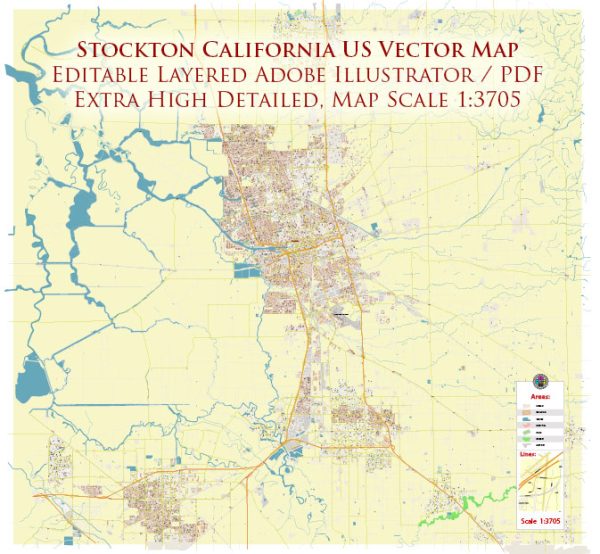Stockton, California, has a rich history of urban development that reflects the broader trends and challenges faced by many American cities. Here is an overview of Stockton’s urban development history:
- Early Settlement and Incorporation (1849-1860s): Stockton’s history dates back to the Gold Rush era of the mid-19th century when it was established as a supply and transportation center. The city was officially incorporated in 1850, the same year California became a state.
- Transportation Hub (Late 19th Century): Stockton’s strategic location along the San Joaquin River made it a crucial transportation hub. The city played a key role in the development of the Central Pacific Railroad, contributing to its growth and economic importance in the late 1800s.
- Agriculture and Economy (Early to Mid-20th Century): Stockton’s economy became increasingly tied to agriculture, benefiting from the fertile soil of the San Joaquin Valley. The city’s growth was further fueled by the construction of the Stockton Channel, connecting it to the San Francisco Bay and facilitating trade.
- Post-World War II Suburbanization (1950s-1970s): Like many American cities, Stockton experienced significant suburbanization in the post-World War II era. The expansion of highways and the availability of affordable housing led to the development of suburban communities surrounding the city center.
- Population Growth and Diversity (Late 20th Century): Stockton’s population continued to grow, and the city became more culturally diverse. However, economic challenges, including deindustrialization and changes in the agricultural sector, contributed to social and economic disparities within the community.
- Economic Challenges and Bankruptcy (Late 20th Century to Early 21st Century): Stockton faced economic difficulties, particularly in the wake of the 2008 financial crisis. The city declared bankruptcy in 2012, making it one of the largest municipalities in the United States to take such a step. The bankruptcy was largely attributed to issues such as high debt, pension obligations, and the collapse of the housing market.
- Revitalization Efforts (Present): In recent years, Stockton has focused on revitalizing its downtown area and addressing economic and social challenges. Efforts have been made to attract businesses, improve infrastructure, and invest in education and community programs. The city has also gained attention for experimental initiatives, such as the Stockton Economic Empowerment Demonstration (SEED), a basic income pilot program launched in 2019.
Stockton’s urban development history reflects the broader trends of urbanization, economic shifts, and social changes that have shaped many American cities over the years. The city continues to evolve, facing both challenges and opportunities in its ongoing efforts to create a vibrant and sustainable urban environment.


 Author: Kirill Shrayber, Ph.D.
Author: Kirill Shrayber, Ph.D.